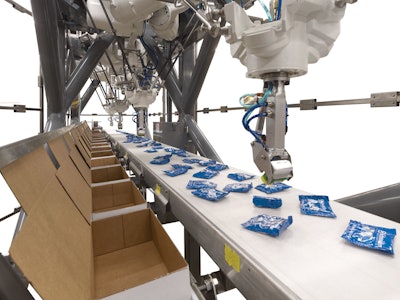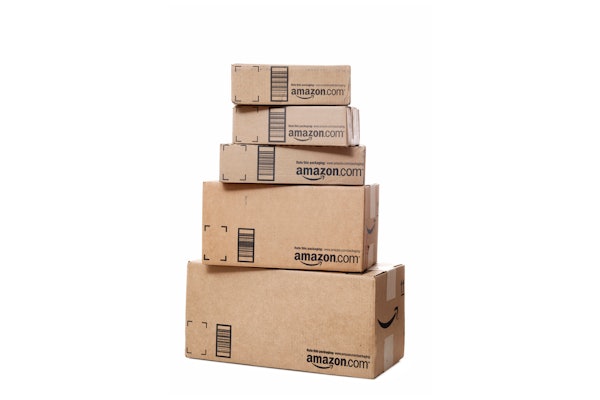
A leading robotic integrator and maker of secondary and end-of-line packaging equipment, Schneider Packaging Equipment makes a line of Robotic Vertical Carton Loaders that are suitable for food, pharmaceutical, personal care, and other industries. Though speeds vary greatly according to product, 100 picks per minute per robot is generally the line’s rated speed.
According to Schneider sales and marketing director Terry Zarnowski, the choice of Fanuc as robot manufacturer for the RVCL line has been driven by a number of factors, but high on the list has been Fanuc’s approach to 2D machine vision control.
“Every Fanuc robot controller has integrated within it the hardware for vision processing,” says Zarnowski. “It eliminates any need to buy a third-party vision system, along with the challenges of integrating it. And when you’re dealing with a high-speed application like this, if you get latency in the communication between the vision system and the robot, things can get badly out of synch pretty quickly. With Fanuc’s implementation, all the hardware and software tools we need for vision are right in the robot controller.”
Until a couple of years ago the robot used by Schneider was the articulating arm style. “But as Fanuc expanded their offerings, we started using their delta-style robot,” says Zarnowski. “In the photo shown here there are four robots, but we routinely do between one and four.”
Complementing the iR Vision guidance software is Fanuc’s PickTool supervisory software, which orchestrates the activities of the entire work cell. Accepting data from cameras seeing products on the line, it puts the products into a queue and distributes the task of picking to the robots so that every product gets picked. The PickTool software also maintains a count of items that have been placed into a carton so that subsequent robots further down the work cell know how many items remain to be placed in a carton.
As for the Schneider-built portions of the machine into which the robot is integrated, here a Rockwell PLC handles controls. “The robot has its own Fanuc controller, which is slaved to the PLC,” says Zarnowski. “So at our customer’s plant where the RVCL is in operation, the operator and maintenance personnel interface with the very familiar Rockwell HMI.”
Looking toward the future, Zarnowski says the next intriguing thing that might be coming down the robotic pike involves a force transducer that would go on the robot’s end-of-arm tool. Fanuc’s Dick Motley provides a little more detail about this force-sensing technology, which Fanuc calls Integral Force Feedback.
“Vision technology is what gives the robot the sense of sight. Force-sensing technology gives it the sense of touch. It’s been used very successfully for highly precise and demanding assembly applications, like putting a peg in a hole, or in material removal where the robot is sanding something. But now we’re looking at applying a variation of it that would almost be like adding in-process checkweigher capabilities to the robot. Not that it would replace checkweighers, which are established, useful, and well understood. But it could be an interesting tool in the toolbox for an integrator like Schneider.”























